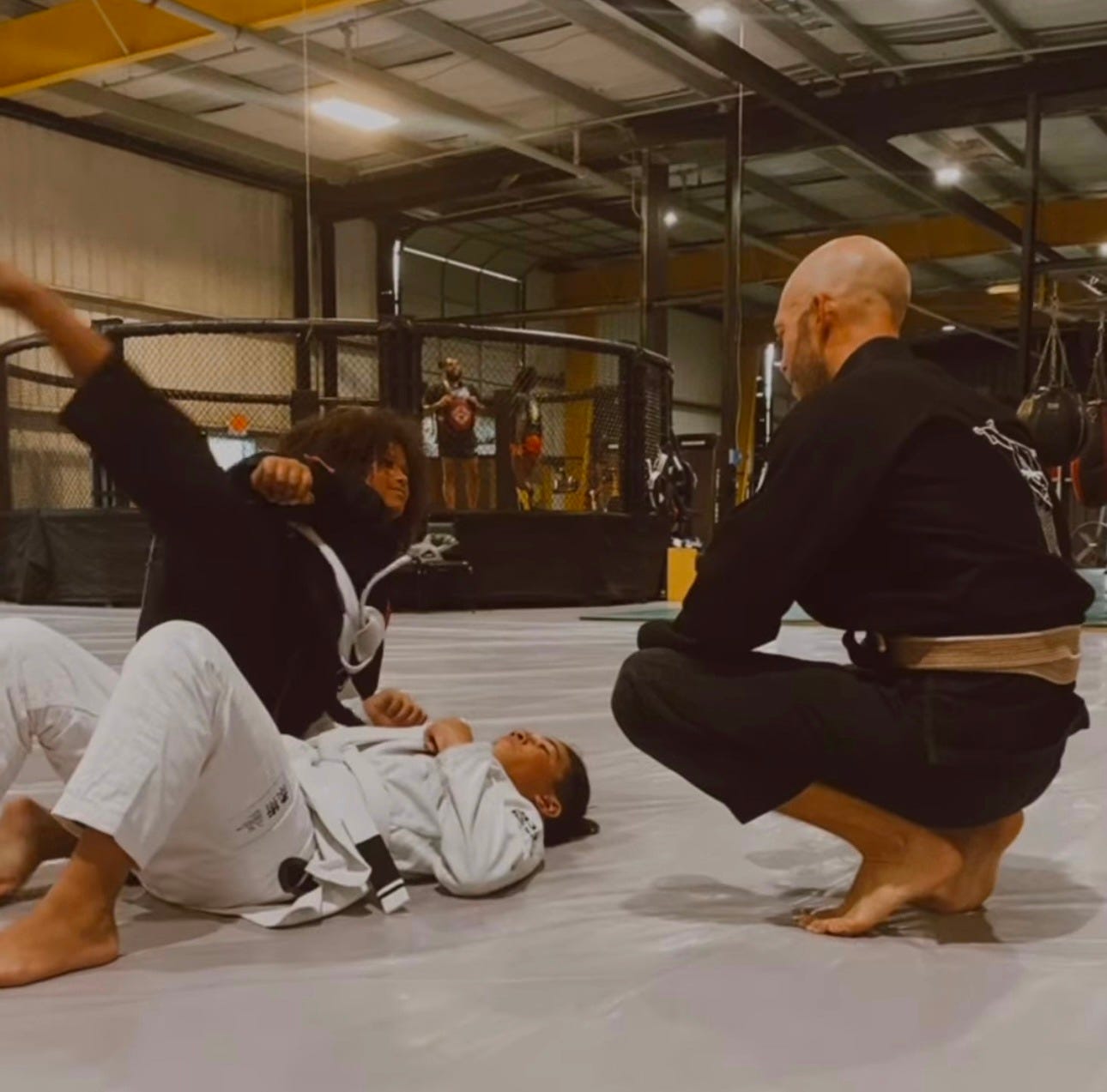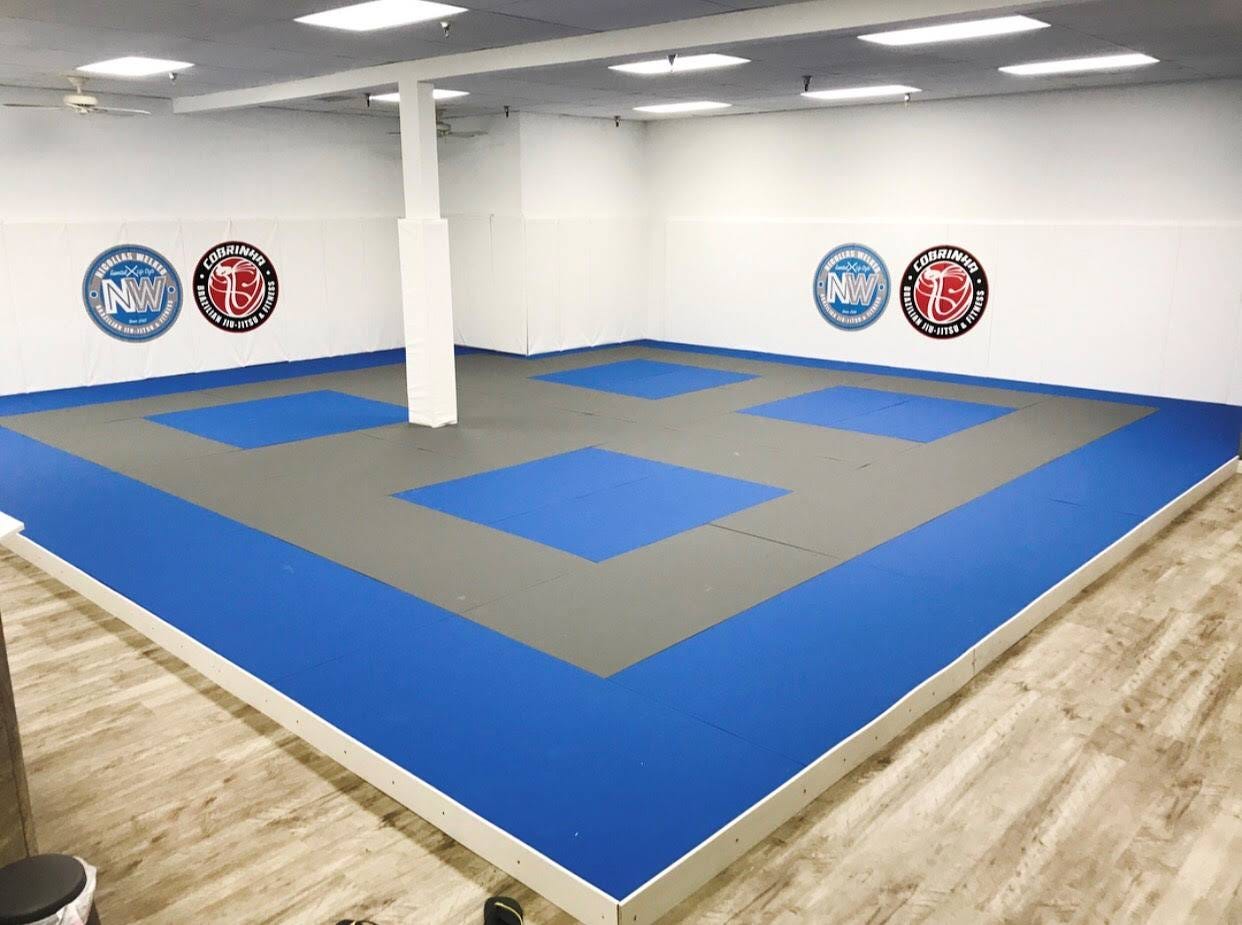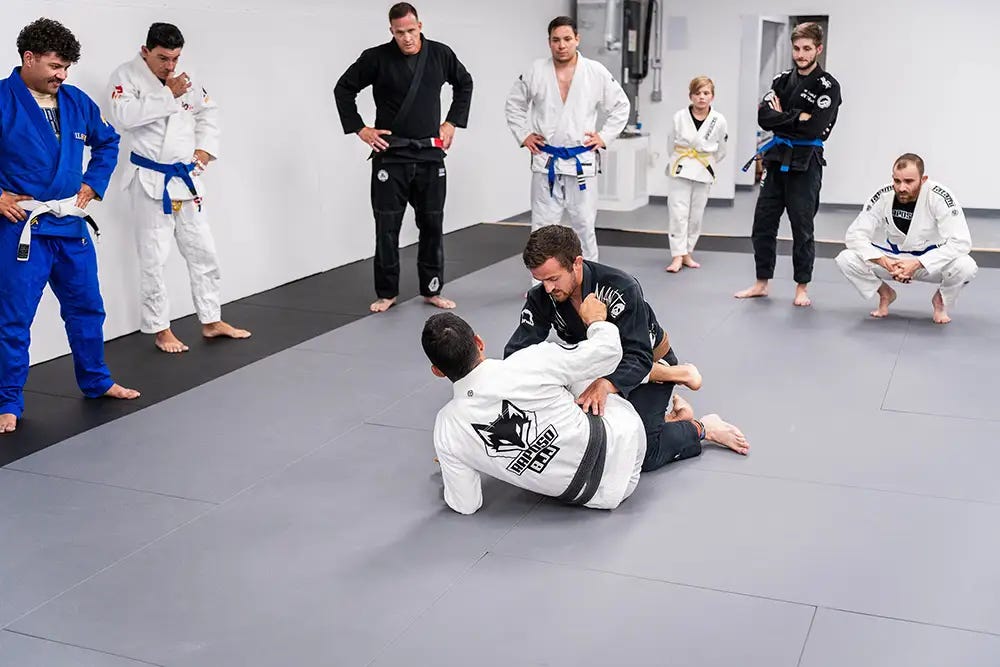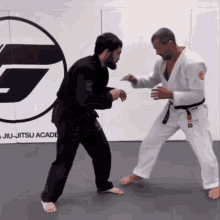What to know for your first Brazilian Jiu Jitsu class
Walking through the door for your first BJJ class is intimidating and 99% of people never have the guts to do it. Here is a short guide about what to expect.
So, you’ve finally decided to take your first Brazilian Jiu Jitsu (BJJ) class.
Maybe you were inspired by a podcast or decided you want a real life experience instead of just watching UFC fights. Maybe your friend convinced you it’s ‘life-changing’ or you are like me and you’re just sick of lifting weights at the normal neighborhood gym. Whatever brought you here, congrats. Taking your first class puts you into the small community of people who have the courage to try this sport. But before you show up to your first class, there are a few things you need to know.
First, why listen to me? I’m a brown belt who has trained for more than 16 years and I’ve worked with countless new students during their first day, first weeks, or even first months as they try to figure out the unwritten rules of BJJ. So don’t worry, I’ve got your back (literally…you’ll understand that later).
Let’s start with what BJJ is. Brazilian Jiu Jitsu originated in the early 20th century when the Gracie family in Brazil adapted techniques from Japanese Judo and traditional Jiu-Jitsu into a ground-focused fighting style. Because BJJ is designed to help smaller people defeat larger opponents using leverage instead of punches, it became widely known for its effectiveness in real fights. This was proven by Royce Gracie during the first ever UFC event in 1993 (as he took down and submitted a professional boxer without getting punched).
The goal is to control your opponent and get them to submit using chokes or joint locks. This might sound intense because, it is intense.
Don’t worry, your first class will only be 60 to 90 minutes, and it follows a structured format that is generally the same at most BJJ academies around the world. You’ll do a warm-up, learn a technique, and then practice sparring (rolling) with other people. Then you’ll go home, drink a gallon of water, and tell your friends it was the best time ever.
On the first day, all you need to do is show up and someone there will walk you through it.
The Decision: Gi versus nogi?
Your first decision will likely be going to a gi (pronounced “gee”) or nogi class. Gi classes require a traditional martial arts uniform that looks like a heavy cotton bathrobe and pants. You will wear a white belt with the gi because that’s the symbol of being brand new. The gi isn’t just clothing, you’ll use it to grip, choke, and control people. Nogi is all spandex shorts and tops, kinda like if wrestling and swimming had a baby. In nogi, you can’t grab the clothing.
If you’re doing a gi class, some gyms offer loaner uniforms for your first day. If not, you can get a simple one on amazon. For nogi, wear a rash guard and shorts without pockets. This isn’t just about looking the part. You need specific nogi gear designed for BJJ because you don’t want a metal rivet or zipper to cut someone, or a foot to get caught in your pocket (best case your shorts get ripped open, worse case you break someone’s ankle by accident).

Don’t buy any nogi gear that is blue, purple, brown, or black/red. These are “ranked” items that correspond to someone’s belt rank with the gi. All white, all black, or grey are safe options. Note: some schools require you to only wear uniforms with their logo so check on that before you buy anything.
Here are a few things you need on your first day:
Gi (traditional uniform) or nogi (shorts & rashguard). Most people change clothes when they arrive and leave the gym so you don’t need to show up with it on.
Compression shorts for under your uniform for both men and women (no g-strings because your gi pants will come untied and fall down a few times every class)
Flip-flops to walk around when you aren’t on the mat
Water bottle
Towel, soap, and change of clothing (you will sweat more than you ever have in your entire life. If you don’t, find a different BJJ class)
Trim your nails, take out any piercings, and leave your jewelry at home
When you arrive at the gym (or academy, or dojo, or club), take off your shoes before stepping on the mat. The mats are the padded areas where you will be training, and you don’t walk onto them until class starts. Because BJJ is barefoot, keeping the mats clean is essential. Walking from the locker room/bathroom onto the mat with your bare feet is an absolute no no.
Depending on the gym’s vibe, before you step onto the mats there might be a bow toward to the instructor, a handshake with every person on the floor, or a casual wave and “what’s up.” When in doubt, follow the lead of everyone else. And please, tell people it’s your first day.
The Warm-up
Classes usually begin with a warm-up. This isn’t your standard jumping jacks and pushups kind of thing. At some gyms the warm-up is 30 minutes of continuous body weight and movement exercises.
You’ll run around the mat, do hip escapes, shoulder rolls, and other movements that will feel strange until they become second nature. The purpose of these exercises is to teach you how to move during BJJ sparring. If someone has you in side control, you need to do a hip escape to get distance (that will make more sense later). The best way to learn a hip escape is doing it thousands of times during warm-ups.
After the warm-up comes technique time. The instructor will demo a move with a student playing the “uke” (the person who gets tossed, choked, or squashed). Watch carefully, then pair up, and try it yourself. On your first day, the instructor will probably put you with an experienced student and you might learn a more basic technique instead of the one the class was shown.
Don’t stress if it feels awkward because no one is perfect on day one (or perfect on day 1000). During your first few weeks, just watch/listen during the technique and don’t ask any questions. Just watch and practice what’s being shown. Good questions will come after you understand more of the basics and that just takes time.
After technique comes sparring or “rolling”. Rolling is full contact, live grappling but remember, you can’t punch anyone in BJJ! On your first day you will get smashed and you won’t win. But that’s not the point. Your goal is to survive, ‘tap’ by slapping your hand on your opponent’s body when necessary (if someone has a choke or joint submission), and try to learn from every exchange. Tapping is how you say “uncle” and it ends the match. Tap early, tap often, and never be ashamed of it. When someone taps you, thank them and move on. In a five minute round during your first class, an experienced student might be able to tap you 10 times.
After class is done, hygiene is a big deal in BJJ. You’ll be rolling around on the same surface as everyone else’s sweat, blood, and occasionally tears. Shower immediately after class to avoid nasty things like ringworm or staph. Wash your gi, rashguard, and belt after every class. Bring an extra set of clothing so you don’t need to sit on your car seats in a sweaty and nasty BJJ uniform.
Unwritten Rules
You’ll quickly learn that there are a million little unwritten rules like not leaving your belt in the middle of the mat, not talking during class, not recording people for your IG story, and definitely not DMing the new girl “thanks for the roll.” These rules are all about mutual respect. You’re in close physical contact with people (like your head might be under someone’s crotch), so keeping things professional is non-negotiable. There’s also a bit of hierarchy involved. The black belt (or next highest belt) in the room runs the show and everyone respects that.
Rolling with different partners will teach you a lot. Some will go easy, some will challenge you, and some may unintentionally elbow you in the face. If you’re paired with someone much older or much smaller, don’t go full beast mode on your first day. BJJ is about control, not brute force. Respect your partner, tell them it’s your first day, and don’t be afraid to ask questions when you are working one on one.
After class, people usually hang around and talk. You’ll be sweaty, exhausted, sore, and almost definitely confused about what just happened. That’s part of the process. Over time, things will click and techniques will start to make sense. You’ll recognize positions, understand timing, and maybe even escape side control without sheer panic. The more you show up, the better you get. The secret to advance from a first day white belt to a black belt is…just keep showing up.
Even if you played contact sports and workout, BJJ has a funny way of humbling everyone. No matter how athletic, strong, or confident you are walking in, you’ll be reduced to a flailing white belt trying not to get strangled. But if you embrace the discomfort, show up with a clean gi and an open mind, you’ll find yourself becoming part of something special. BJJ isn’t just about learning to fight, it’s about learning to stay calm under pressure, to improve through failure, and to keep coming back even when you feel like quitting.
So get ready for your first class. It will be awkward and you will suck. You will sweat through your gi or rash guard. You will be the slowest person during each exercise. You might throw up (in a trashcan please) during the warm-up. You’ll probably forget the technique five seconds after learning it. But you’re officially be part of a worldwide community of people who love this weird, sweaty, savage sport. See you on the mat. Oss (おうす)!
About the author: I’ve trained for +16 years and I’m a brown belt at Orlando BJJ in Florida. You can listen to me talk about BJJ on the BJJ Wiki ‘Off the Mats’ podcast or my interview with the founder of non-profit Guardian BJJ. Follow me at RulesofBJJ on Instagram.











